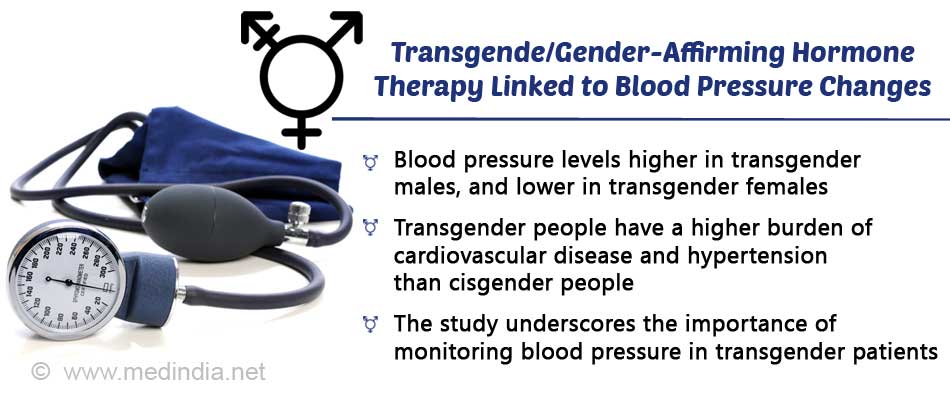Irwig and colleagues followed 470 patients who began GAHT at two medical centers in the Washington, D.C. between 2007 and 2015. Participants were all at least 17 years old and non-cisgender. Of the 470 patients, 247 were transfeminine and 223 were transmasculine; about 27 percent of patients were non-white. Researchers measured each patient’s blood pressure before beginning GAHT to establish a baseline and continued measurements at subsequent clinical visits for up to 57 months.
‘Transgender therapy is linked to blood pressure changes. Blood pressure levels were higher in transgender males, and lower in transgender females.’
Within two to four months of beginning hormone therapy, transgender women saw an average decrease of 4.0 mm Hg in their systolic blood pressure, while transgender men saw an average increase of 2.6 mm Hg. The prevalence of stage 2 hypertension (at least 140/90 mm Hg) dropped from 19 percent to 10 percent in the transfeminine group within two to four months of beginning hormone therapy. The use of testosterone in transgender men could lead to an increased risk for heart attack or stroke if they also have untreated high blood pressure.
In addition, the results indicated that some patients experienced different blood pressure effects compared to the majority of those with the same gender identity. Some transgender women and transgender men saw blood pressure rates trend in the opposite direction of their peers. The study authors highlight this is an area that requires further research, noting individuals taking the same medication may react in different ways.
“Further research is needed to understand how different formulations may affect different people and to find out if there are any disparities among Black or Latinx patients,” said Irwig, who is also Associate Professor of Medicine at Harvard Medical School. “A 2020 Scientific Statement from the American Heart Association indicates that it is paramount to include LGBTQ health in clinical training and licensure requirements for health care professionals so that physicians can better address cardiovascular health disparities in the LGBTQ community.”
Source: Eurekalert



